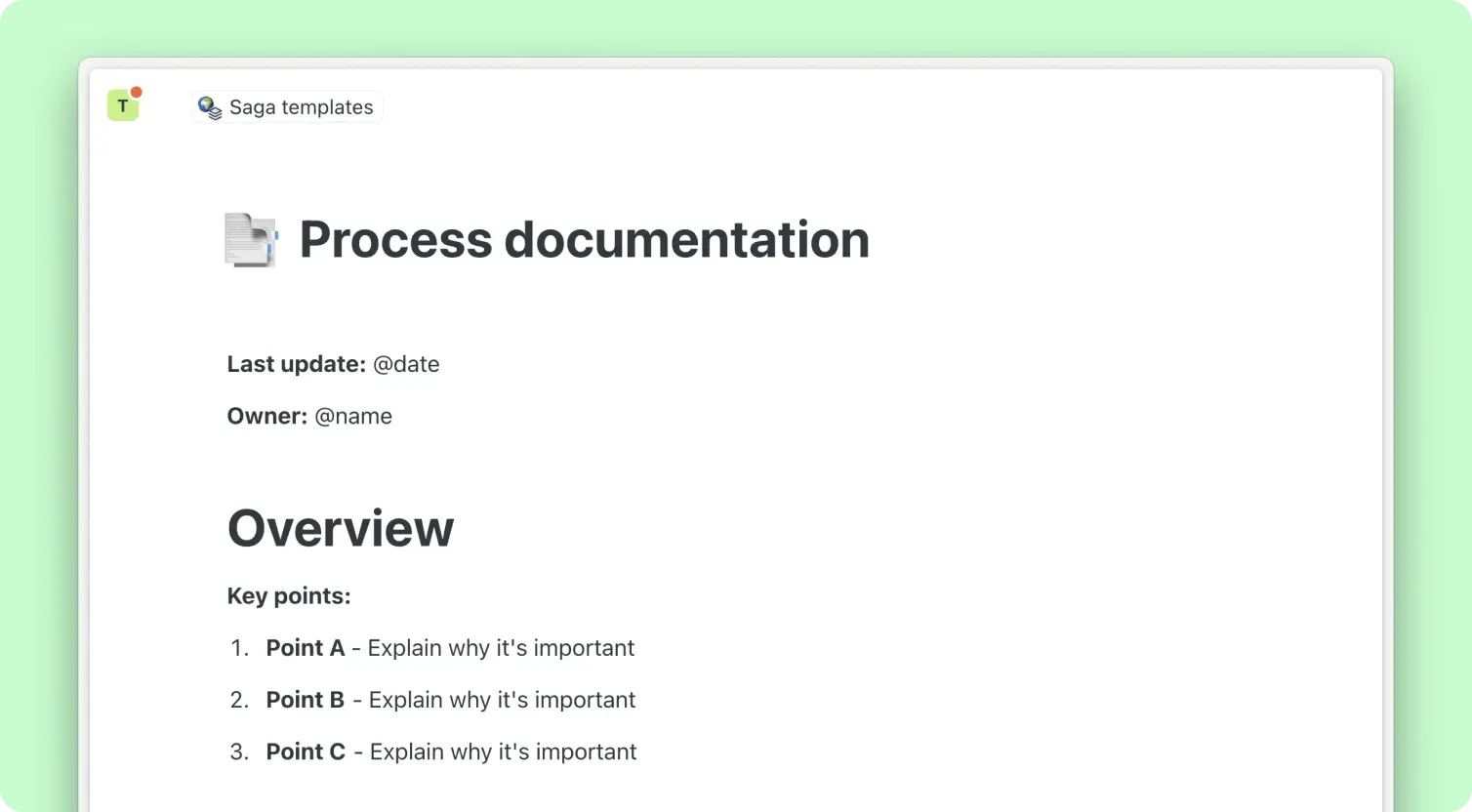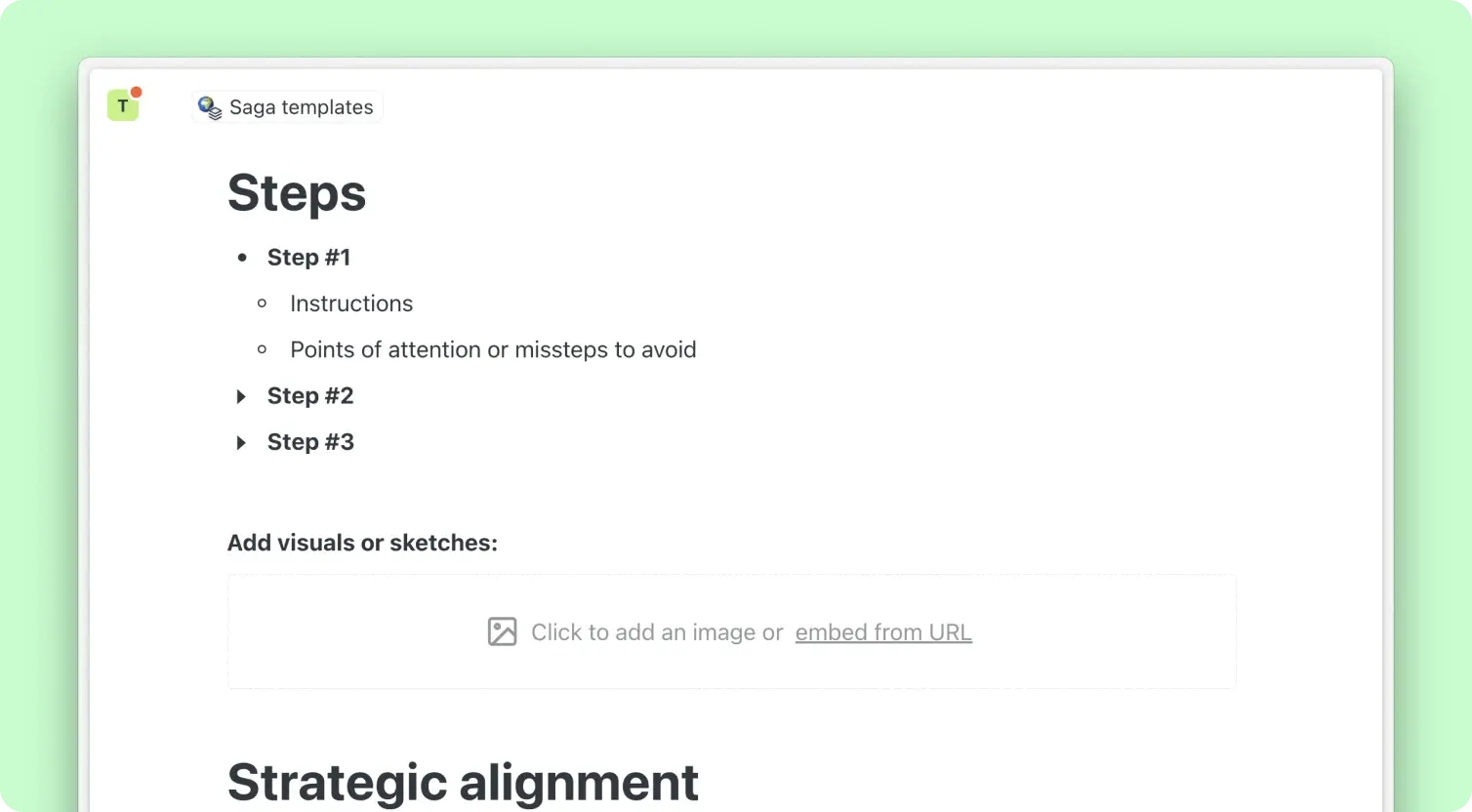Process Documentation
Utilize our comprehensive guide to create, manage, and maintain your process documentation efficiently, ensuring clarity and consistency across your organizational workflows.

What is process documentation?
Process documentation is a detailed written text or illustration that describes the steps and procedures involved in completing a specific task or process within an organization. It includes manuals, guides, flowcharts, and other materials that provide information about the process’s steps, roles, and responsibilities.
Effective process documentation is essential for employees, managers, and stakeholders. It ensures that everyone involved in the process understands the steps, roles, and responsibilities. It serves as a reference point for training, onboarding new team members, and ensuring processes are followed correctly and efficiently.
Creating and maintaining comprehensive process documentation helps preserve knowledge about the processes, making it easier to update, scale, and maintain over time.
Benefits of process documentation
Adopting thorough process documentation practices offers numerous benefits, including enhanced clarity and communication. Clear documentation helps bridge the gap between different team members, ensuring everyone understands the process’s steps and responsibilities.
Process documentation also promotes consistency and standardization. By having a single source of truth, teams can ensure that all members are on the same page, reducing the risk of errors and miscommunication.
Furthermore, well-maintained documentation facilitates easier onboarding and training. New team members can quickly get up to speed with the processes, reducing the learning curve and increasing productivity.
Lastly, comprehensive documentation aids in troubleshooting and process improvement. It provides a detailed reference that can help in identifying inefficiencies and implementing improvements more efficiently.
How to create effective process documentation
Creating effective process documentation involves several key steps. Start by identifying the audience for your documentation and understanding their needs. This will help in tailoring the content to be relevant and useful.
Next, structure your documentation logically. Use clear headings, subheadings, and sections to organize the information. Include detailed explanations, flowcharts, diagrams, and examples to illustrate key points.
Engage your team in the documentation process to ensure accuracy and completeness. Review and update the documentation regularly to reflect any changes in the process.
Conclude by making your documentation easily accessible. Use tools and platforms that allow for easy navigation, searchability, and collaboration. Remember, the goal is to create a resource that is both informative and user-friendly.

Free template for process documentation
To assist you in creating and maintaining your process documentation, access our free template. It’s structured to guide you through documenting your process’s steps, roles, and responsibilities, making it easier for you and your team to ensure clarity and consistency across your workflows.
Get started
Then click on "Copy Page" to duplicate it in your workspace.


